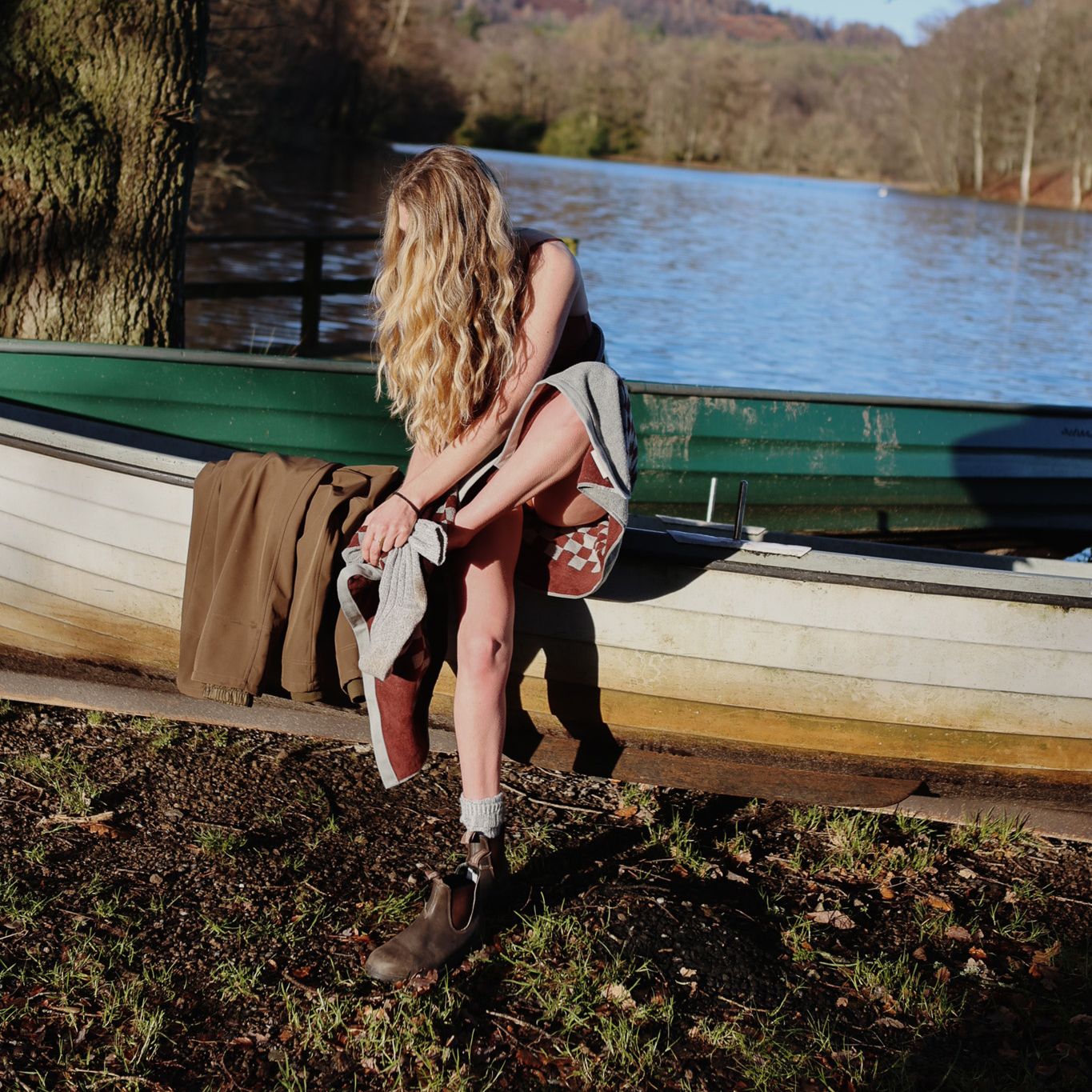Bathing & Connection
Volume 02.
Karen Kim
Bathing & Connection
Volume 02.
Karen Kim

Karen Kim is the founder of BINU BINU. A brand inspired by the Korean bathhouse [Jjimjilbang], a place free of vanity and inhibition where generations are brought together in the simple act of cleansing. Growing up bathing with her mother, grandmother, and aunts, is a ritual that has supported the intergenerational bond she has with the women in her life, fostering a sense of intimacy and connection. Now in her adult life, with her children, she practises the same bathing rituals.
Karen shares how the bathhouse is an ode to the bond between generations. Providing a space 'where it is customary to show others care, where communal care and self-care are one in the same; celebrating not just ourselves but the collective us in a space of our own.'
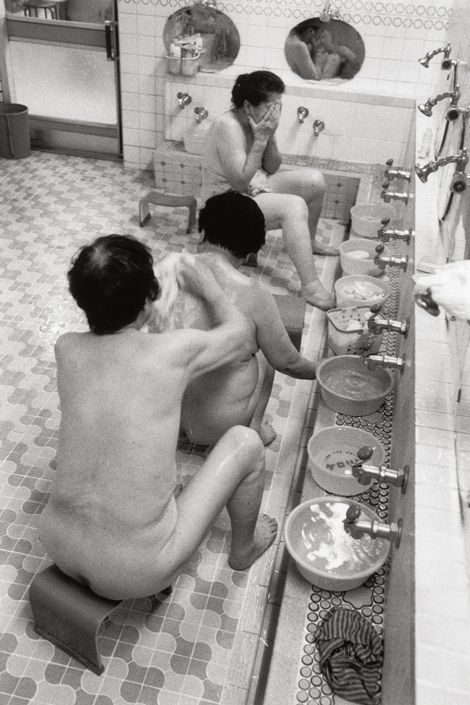
Above: A found photo via @binubinu_soapsoap of women bathing together at a Korean public bathhouse. Here, it’s customary to help scrub your fellow bather’s back while preparing to enter the bathing pools, a gesture that is both pragmatic and kind, intimate and universal.
"I think bathing is a form of care. A form of service to both oneself, and in certain chapters of your life where you have a caretaker role, to others. It’s a simple, daily way to say that you matter - to yourself, or to others.
I can remember what it was like to have my grandmother bathe me as a child. In my adult life, with my kids, I do the same. I know that will end one day when they are older, but for now, I can enjoy the experience. I think through BINU BINU (born of a memory of trips to the public baths in Korea with my mom and aunts), I can try to hold on to this idea and share it with others - an ode to the intergenerational practice of the Korean bathhouse and the sense of intimacy and connection it fosters."

Above: A photo of Karen Kim, founder of BINU BINU, and her Mother.
"The only thing asked of you in the bathhouse space is to show up and remove all traces of the outside world. And then when you are fully stripped down, you can simply be."
- Karen Kim
"Public bathing is primarily a social activity that doesn’t demand conversation. The purpose of gathering is to simply relax, bathe, and spend time. Even the hours of operation of a bathhouse (many are 24 hours a day), releases the pressures of time commitment and schedule, really setting the tone for letting everything else go.
The only thing asked of you is to show up and remove all traces of the outside world (clothing, the layer of outside film through the requisite pre-bathing pool shower, the layers of dead skin through a scrub treatment). And then when you are fully stripped down, you can simply be - with yourself and others, whether strangers or friends or family. The space and bathhouse rules dictate that when you are in the bathhouse you are just your authentic self, surrounded by others who are likewise bare and true."
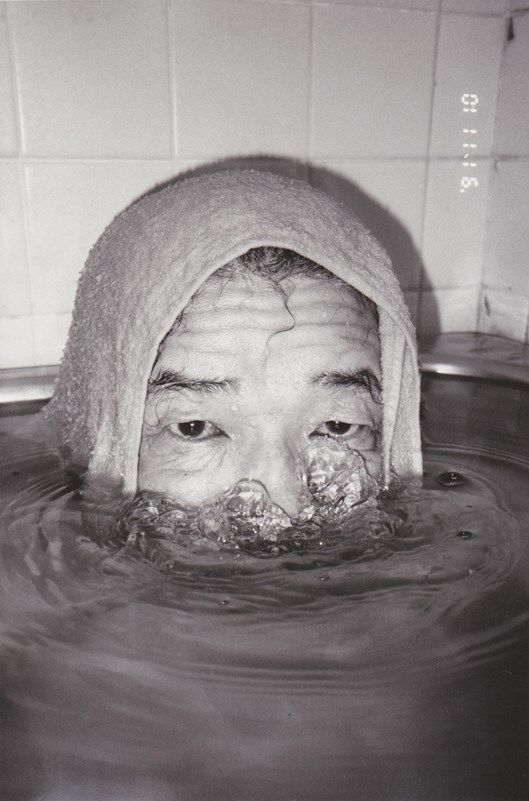
Above: A photo from the book “Bukubuku” (bubbling), a series of self-portrait photos by photographer Masahisa Fukase.
"I prefer showers for the daily business of self-care. They are more akin to the bathhouse practice of pre-bathing, the purpose of which is to clean your body before relaxing in the communal bathing pools. A bath is a luxury, something that I take every once in a blue moon. A truly rare indulgence.
In my house, the bath tub is reserved for my kids’ daily bath time before bed, where I’m in service to them - washing their hair, watching them play with the bubbles.... It’s a part of being a parent that I love. But for this reason, I think that I prefer showers myself because they are just for me. They are a chance for me to have time to myself.
I love hot, nearly burning water, even though I know it’s drying for the skin. But I just love the heat and the steam it creates. I wash my hair; then use a bar of soap for my body. I don’t like to have a lot of things in my shower to clutter things up so I like to make sure they are each a thing of beauty or add joy. After, I light a candle or burn some incense - all the sensory things to signal that the end of the day is for relaxation."
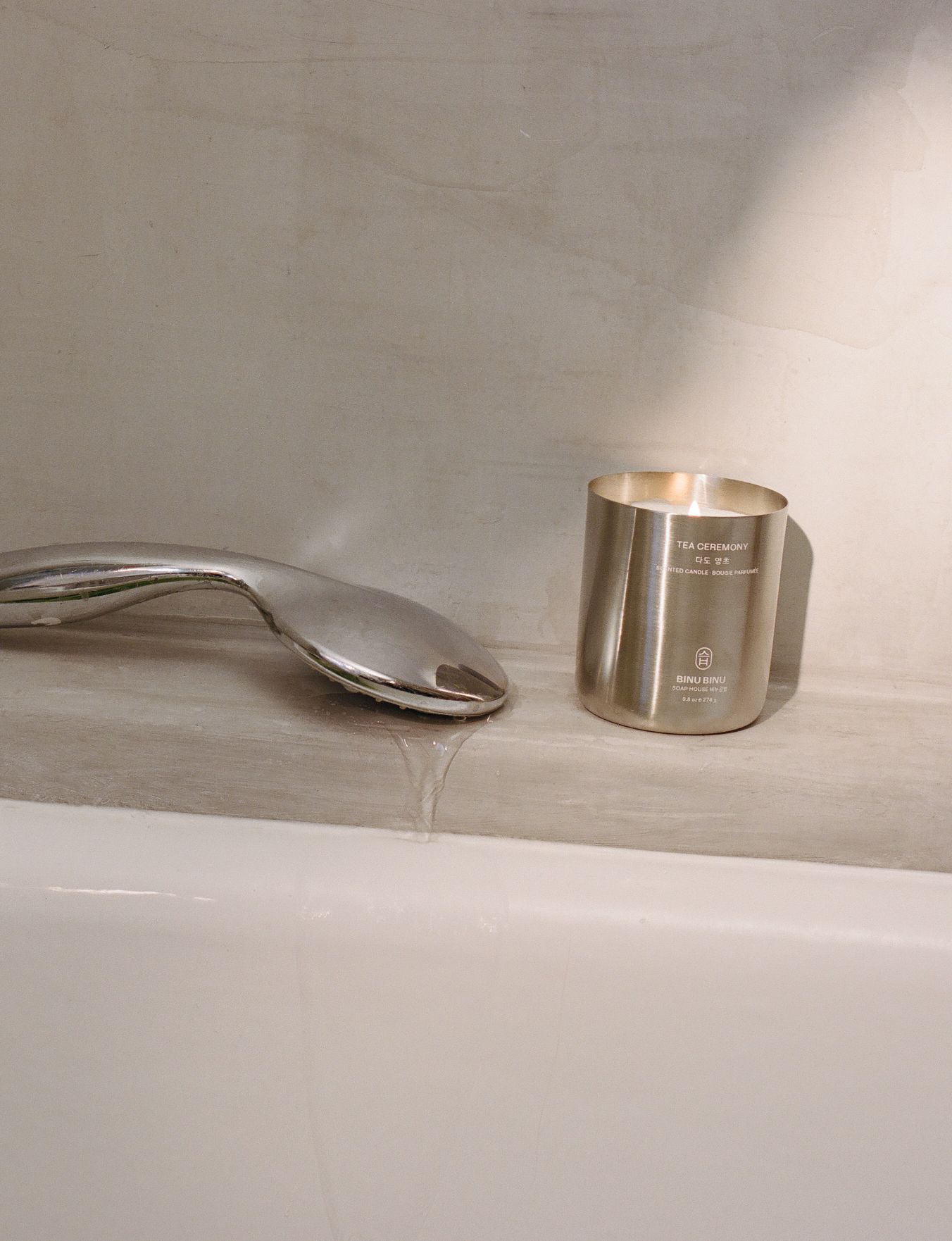
Above: Photo of Binu Binu “Tea Ceremony Candle”, photo by Polly Brown.
"I like to bathe at the end of the day, to reset so that I can climb into bed feeling clean and warm. I read something recently about reframing bedtime as the beginning of the next day. Like a gift to the future you type of thing. Bathing before bed means that you wake up and you are ready for the day ahead."
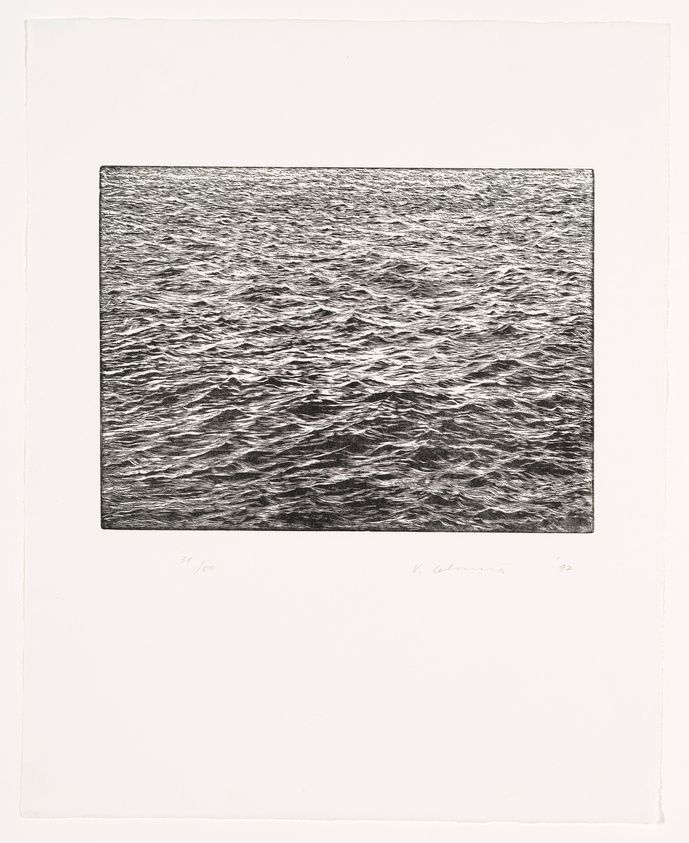
Above: Ocean Surface Woodcut, 1992, by Vija Celmins (Whitney Museum of American Art).
"The sensory elements of my bathing routine is the water, and the warmth, the steam literally opens up your pores and your breathways. A bar of soap, especially the feeling of opening a new solid bar and watching it turn to soft, light lather. The intention of going into a hot shower is to focus on feeling after a day of thinking and doing.
Being in water allows your senses to engage in a way that’s disconnected from the outside pressures of expectation, productivity, work, etc. You move more slowly. All you need to do is lather, rinse, repeat. A mantra of a soap-obsessed soap-maker, perhaps."
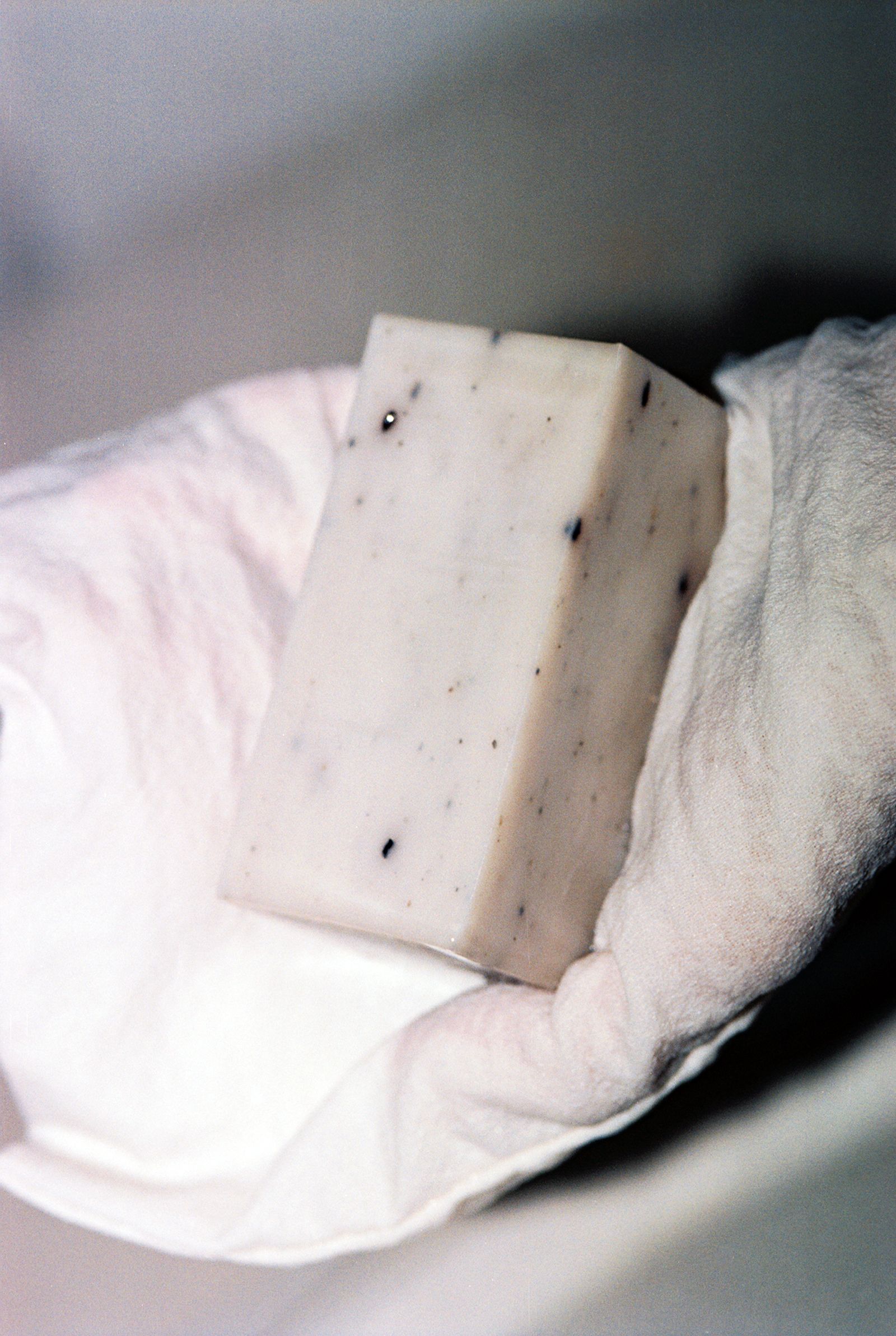
Above: A bar of Binu Binu “Seshin Korean Scrub Soap” held by a hand wearing the “Seshin Korean Scrub Mitt”, photo by Adrianna Glaviano.
Credits
See more of Karen's journey through BINU BINU
